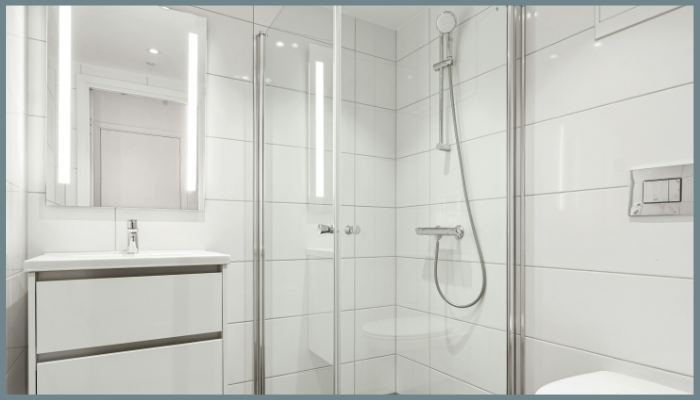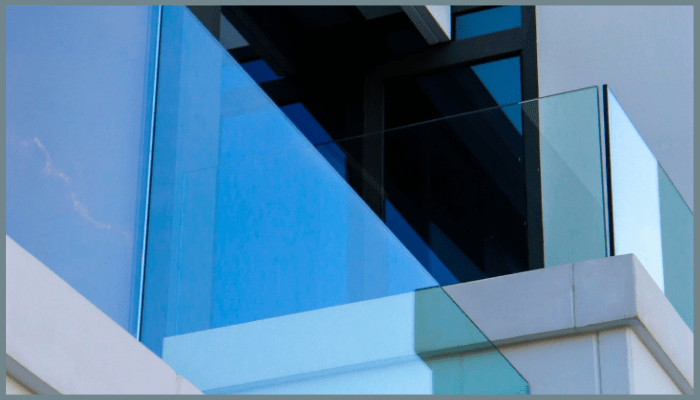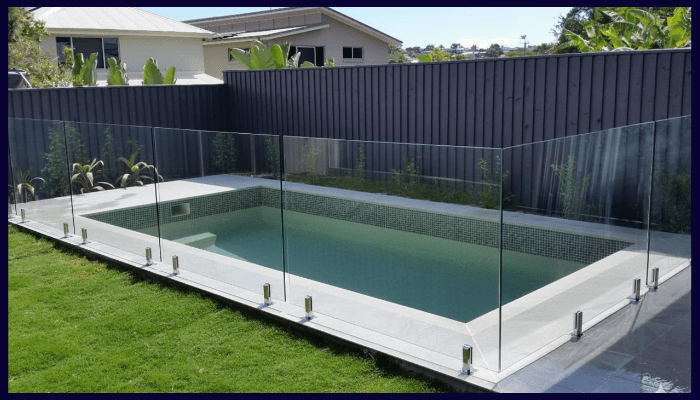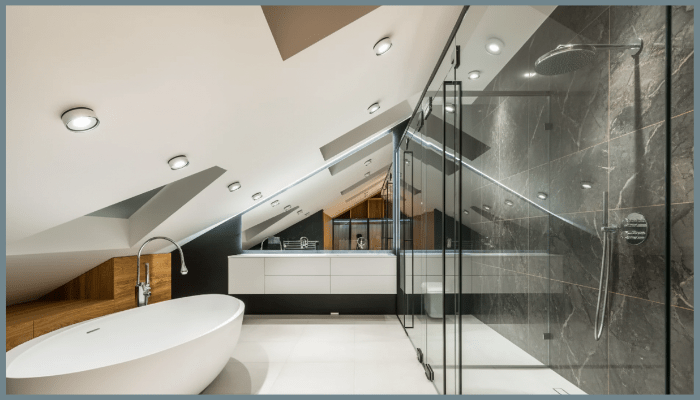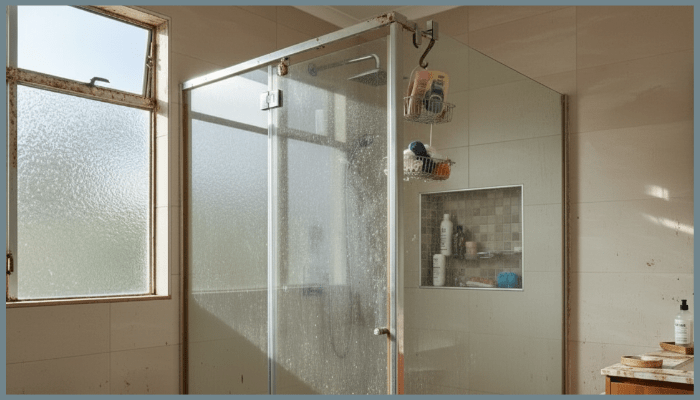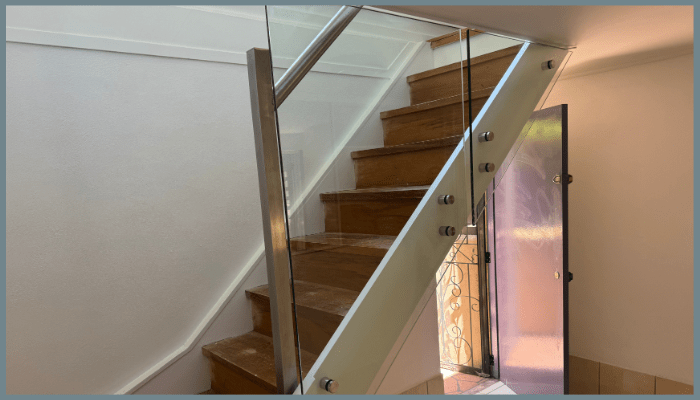Why Frameless Shower Screens Need Brackets (and Why Sealant Alone Isn't Enough)

Frameless shower screens need brackets to maintain their clean look and long-term safety in your bathroom.
heir sleek glass panels add a modern touch and make the space feel larger. But here's the thing: these panels need proper mechanical support to stay safe and secure for years.
In Australia, AS 1288 compliance ensures quality installations, and silicone sealant by itself just won't do the job. Let's look at why frameless shower screens need brackets.
We'll also cover how the right hardware works with sealant. Finally, we'll discuss what to consider when installing or upgrading your shower screen in Canberra.
Why Frameless Shower Screens Need Brackets for Safe Installation

Structural Support for Fixed Panels
Frameless designs skip the bulky frames. They use wall brackets and floor channels to hold glass panels securely in place.
Without these supports, your glass will flex each time someone uses the shower door. This makes the panel's weight a serious issue.
A strong bracket system handles the load well. It transfers weight to your wall or floor, rather than relying on silicone to hold everything up.
Load Distribution and Stability
Big glass shower screens are heavy. They take on stress from hinges, swinging shower doors, and constant water exposure.
Brackets spread this load through secure fixings into your walls. They hold your glass panel in place, prevent flexing, and keep it aligned.
This way, your shower screen remains durable and safe over time. Skip proper support and you're looking at cracks, panels shifting out of position, or complete failure eventually.
Compliance with AS 1288 and AS/NZS 2208
Australian standards require the right thickness and type of glass for showers. This is usually toughened safety glass, and it must be installed correctly.
The standards may not mention "brackets" directly, but every pro installer knows that mechanical support is key for large frameless panels.
Brackets or channels are common in bathroom projects. They help meet regulations and ensure compliance with building codes.
Why Silicone Sealant Alone Isn't Enough
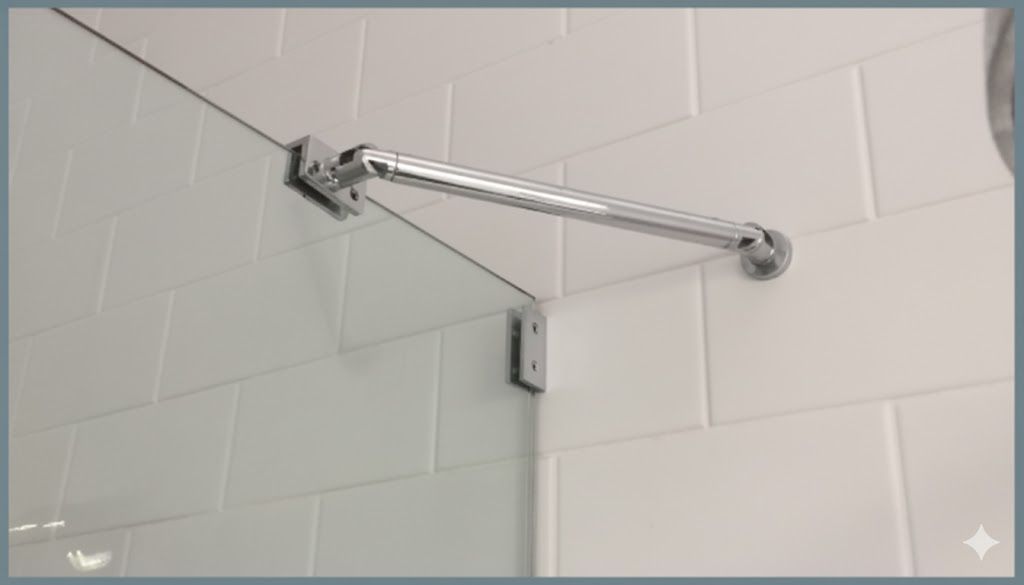
The Purpose of Silicone Sealant in Installation
Silicone sealant plays a key role in waterproofing your shower. It seals gaps between the glass, wall, floor, and channel effectively.
It stops leaks, prevents mould growing behind your tiles, and keeps water damage away.
But here's what people miss: silicone's job is sealing, not supporting weight. It's never been designed to hold glass panels up.
Common Failures Without Brackets
Install a frameless shower screen without proper brackets or fixings and watch what happens. Your glass panel begins to move.
Silicone pulls away from surfaces. Leaks pop up everywhere. In the end, the panel may crack or break completely.
Silicone deteriorates anyway from constant moisture, temperature swings, and repeated stress.
Even premium silicone can't handle the ongoing weight of a fixed panel because that's not what it's made for.
Risks to Safety, Waterproofing and Durability
Skipping bracket support to save money can cause panels to sit crooked. This may lead to unexpected glass breakage, high repair bills, and real safety risks in your bathroom.
A stressed glass edge can shatter suddenly. Also, water leaking behind tiles may cause serious structural damage.
You might not notice these issues until it’s too late. Properly supported shower screen panels give you both the style you want and the safety your family needs.
Types of Brackets and Fixings

Wall Brackets vs Full-length Wall Channels
Wall brackets are clips that you attach to the wall at specific points. Full-length wall channels run from top to bottom, supporting the glass edge.
Channels provide ongoing support and keep everything aligned. But if you prefer less visible hardware, discrete brackets work better.
What you choose typically comes down to your panel size, glass thickness, and how you want your bathroom to look.
Floor Brackets and Base Channels
The bottom of your shower screen panel needs anchoring just as much as the sides. Floor brackets or base channels lock the glass edge to your floor or shower tray securely.
Without these, your panel starts sliding around or levering whenever someone opens the shower door or leans against the glass. That's when things break.
Material and Finish Options (Chrome, Matt Black, Solid Brass)
Quality hardware delivers both strength and style, plus it needs durability in wet conditions. Chrome is still popular for its classic shine.
Matt black is perfect for modern bathrooms. Solid brass adds timeless quality. The right materials resist corrosion from constant water exposure.
They also enhance your bathroom’s overall look.
Installation Best Practices and Australian Standards
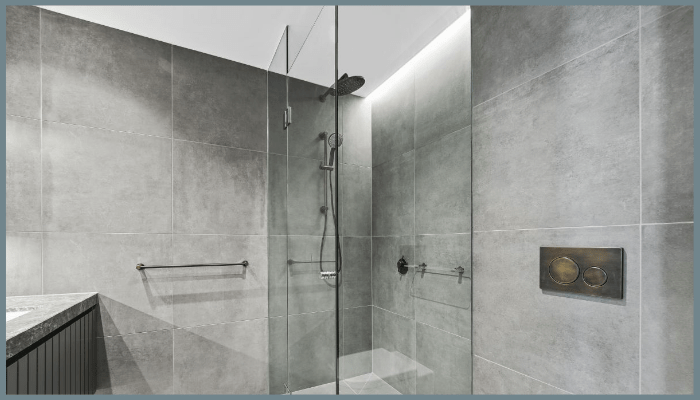
What as 1288 Requires for Frameless Shower Screens
AS 1288 (Glass in Buildings) and AS/NZS 2208 outline safety glass requirements and installation guidelines in Australia.
Canberra installers follow these standards to:
- Determine the right glass thickness.
- Calculate load-bearing capacity.
- Secure fixings correctly.
- Create waterproof seals.
Meeting these standards keeps everyone safe and means your shower complies with regulations.
Local Canberra Considerations for Bathroom Projects
To install frameless shower screens or renovate bathrooms in Canberra, follow local building codes and the
National Construction Code (NCC).
Experts familiar with
ACT/NSW compliance make sure your shower screen panels are installed right. This helps your bathroom project meet standards and keeps everything safe for years.
Why Professional Installation is Critical
Installing frameless shower screens is more than just attaching glass panels with brackets and silicone. You need accurate leveling and strong anchoring into the right wall materials.
Also, ensure perfect silicone application. Everything must work well with your tiles, floor gradients, and plumbing.
Professional installers know how to make your screen secure, aligned, and built to last.
Summary: Why You Should Never Skip Brackets
Using proper brackets for frameless shower screens is essential. You can’t skip this step if you want safety, durability, and compliance. Your glass panels need support.
Use wall brackets, floor channels, or both. Also, silicone sealant is essential for waterproofing. If you just use sealant, panels can shift.
This may cause water leaks and could even break the glass. Quality hardware is key. Following best practices is important, too.
Getting professional installation protects your bathroom investment.
Protect your bathroom investment with professional frameless shower screen installation today.
Frequently Asked Questions
Do Frameless Shower Screens Really Need Brackets?
Absolutely! Brackets provide the support to secure large glass panels. They keep the panels in place and help meet Australian safety standards. Silicone by itself won't provide structural support no matter what anyone tells you.
Can Silicone Sealant Alone Hold a Frameless Glass Panel Securely?
Not a chance. Silicone seals gaps and stops water leaking through, but it's not made to carry glass weight. Panels without brackets will shift around, get damaged, and create leaks eventually.
What Types of Brackets Are Best for Frameless Shower Screen Installations?
Wall brackets, full-length wall channels, and floor or base brackets typically work best. Full-length channels cover everything, while individual clips work well if you prefer less visible hardware. Panel size and your style preferences determine what works.
How Thick Should the Glass Panels Be for a Safe Frameless Shower Screen?
Toughened safety glass, 8 to 10mm thick, is perfect for standard frameless shower screens. Bigger panels need thicker glass to handle loads safely without problems.
What Finishes Are Available for Shower Screen Hardware?
Brackets, channels, and hinges are available in polished chrome, matte black, and solid brass. This choice offers both durability and the perfect style for your bathroom.
Are There Special Installation Requirements for a Bathroom Project in Canberra?
Yes, installations need to comply with Australian Standards AS 1288 and AS/NZS 2208, plus ACT/NCC building codes. Professional installers know these requirements and ensure proper waterproofing throughout.
When Should I Replace Hardware or Repair a Frameless Shower Screen Panel?
If you see corrosion on the brackets, glass panels shifting, silicone peeling, or leaks, contact someone for an inspection and possible repairs. Regular maintenance keeps everything durable and safe.
What is a Shower Screen Channel and How is It Different From Brackets?
A channel runs continuous metal along the glass edge from top to bottom. This design offers better support than individual wall brackets that attach at intervals.
Can Frameless Shower Screens Be Installed in Small Bathrooms?
They work brilliantly in small spaces, but you need careful plans. Consider brackets, floor channels, and panel size to keep your bathroom stable and avoid crowding.
How Does Panel Thickness Affect the Number of Brackets Required?
Thicker glass panels are more rigid, so they may need fewer brackets, while thinner frameless shower screens need brackets positioned carefully to prevent flexing or movement under load.

Indy Hunter, Founder and Owner of Canberra Glass Fencing, brings years of hands-on experience delivering premium frameless glass fencing solutions that elevate the style, safety, and value of Canberra’s homes and outdoor spaces.
Read Full Bio